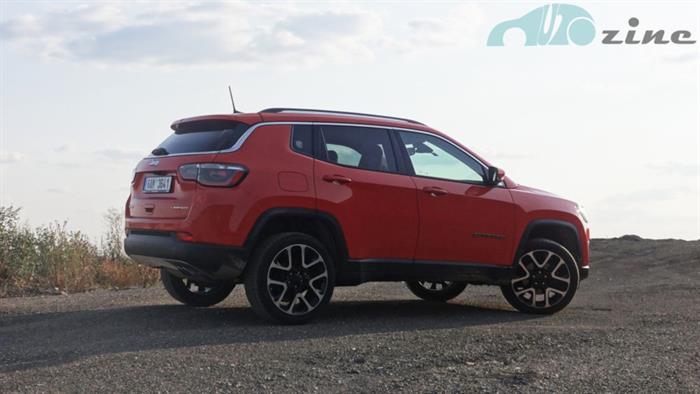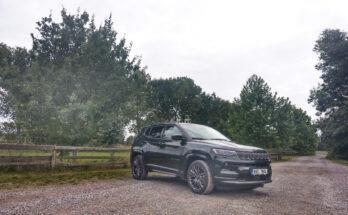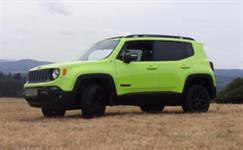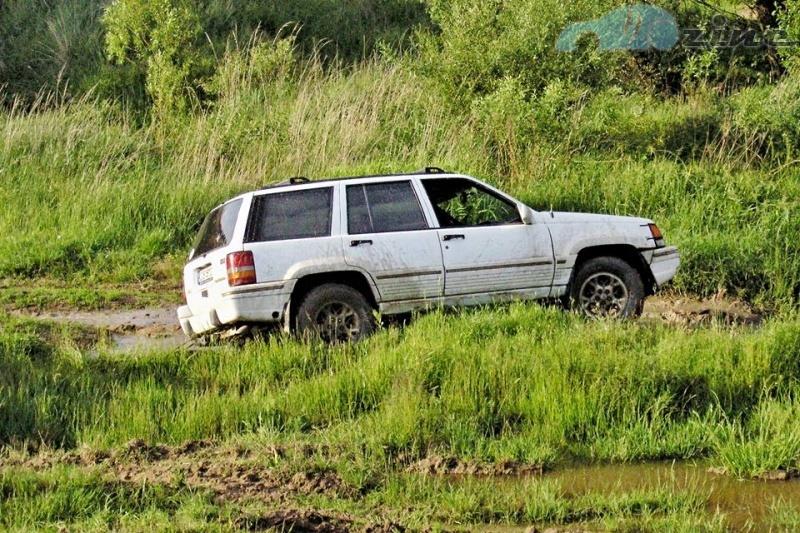This handsome compact SUV has been plying our roads for some time now, we just got our hands on its 2.0 liter diesel version with a nine-speed automatic and Limited trim. This is already the second generation of this model, which, with its originality and certain reference to the past, tries to appeal to a considerable part of its potential customers. Compass does not have it easy at all in its segment, the competition here is really big. However, it really cannot be denied a certain effort and, for example, it becomes one of the best when it comes to cross-country ability.
The second generation of this model is, I assume to everyone's satisfaction, miles away from the first, mainly thanks to the concern in which the Jeep brand is currently located. For example, the Compass now shares a common platform with the Fiat 500X or its stable sibling the Renegade .
With the new technology also came a new and fresh look and new blood was poured into the Compass' veins. Compass now feels very confident. The most prominent part is its front part, which has a mask with a typical structure with seven holes. The mask is directly followed by the somewhat stern-looking front headlights. The massiveness of the front part is further determined by its tall structure with relatively strict horizontal proportions. Its side profile only underlines the overall strength. The lower line of the side glazing rises continuously along its length, and most of the meat (sheet metal) is then logically located above the rear wheel. The side profile is further enlivened by a discreet chrome line that starts from the front rear-view mirrors and effectively lines the upper part of the side windows on both sides of the car. It subsequently falls over the "twin" pillar and skirts the bottom edge of the fifth door window. The rear part of the car is very decent and only completes and underlines the overall compact feeling.
The interior of the second generation Compass no longer exudes such enthusiasm. A very strictly vertically oriented central part of the dashboard with a large number of individual controls simply does not look very attractive and modern. This group is dominated by the on-board infotainment touchscreen, through which you control the functions of the audio system, navigation, air conditioning or the phone itself. You get used to the infotainment control relatively quickly, the only thing that freezes you is its slower response and the absence of Czech. The central panel between the front seats has a drive mode controller, then a relatively large automatic transmission selector and controls for the electronic handbrake, start x stop system and stabilization system. However, the multi-functional steering wheel itself, which has a pleasantly massive perimeter collar, is certainly worthy of praise. I would also like to praise the display of the on-board computer, which is located between the speedometer and tachometer alarms and which provides you with a really large amount of data about the vehicle in pleasant graphics.
There is enough space in the front seats, but it is not so cheerful in the back seats and in the trunk. The trunk has a basic volume of 438 liters (388 liters with a travel wheel, 368 liters with a full-size wheel) and logically, it can be loaded very well when the car is taller. But what is no longer logical and user-friendly is the impossibility of removing the rear panel without folding down the backs of the rear seats, it is simply not possible in the classic rearward direction, thanks to the massive and tapering "baby" pillars.
As I already mentioned in the introduction, the Compass we tested had a turbocharged two-liter MultiJet diesel engine with a volume of two liters in combination with a nine-speed ZF automatic. In Jeep's offer, you can also find the basic MultiAir 14-litre gasoline engine or the MultiJet 16-litre diesel engine.
The tested two-liter diesel had a power of 125 kW and a torque of 380 N.m. The performance is adequate and, of course, sufficient for this car, but the desired dynamic driving can be spoiled by the tested automatic transmission, which sometimes does not have much understanding for this driving style. However, when you have a light foot, it works very well, driving with it is very smooth. Its tuning at highway speeds is certainly worthy of praise, when it spins around 2,000 rpm in ninth gear and the ride is very smooth and comfortable. During the editorial week, the consumption of the Compass was around a respectable 8 liters per 100 km.
As I mentioned in the introduction, the Jeep Compass is simply not afraid to go off-road. There are several driving modes available here, in which there are changes in the car's settings, mainly in the all-wheel drive. Compass is not a polish, as it may seem at first glance, it can handle a lot in the field. The limit of the tested model was only eighteen-inch wheels with low-profile shoes. The chassis is also very good on classic roads. Its design makes it a vehicle with really very comfortable and versatile features.
The Jeep Compass is a car with an original and pleasing exterior that fits very well into the brand's entire portfolio. Its potential buyers will simply choose it precisely because of its mentioned originality and will certainly forgive it for minor flaws that take place mainly in its interior. According to the seller's website, the base price of the Jeep Compass is an interesting 539,000 CZK. Unfortunately, the price with the tested engine, automatic transmission and equipment is a considerable 942,290 CZK.






































